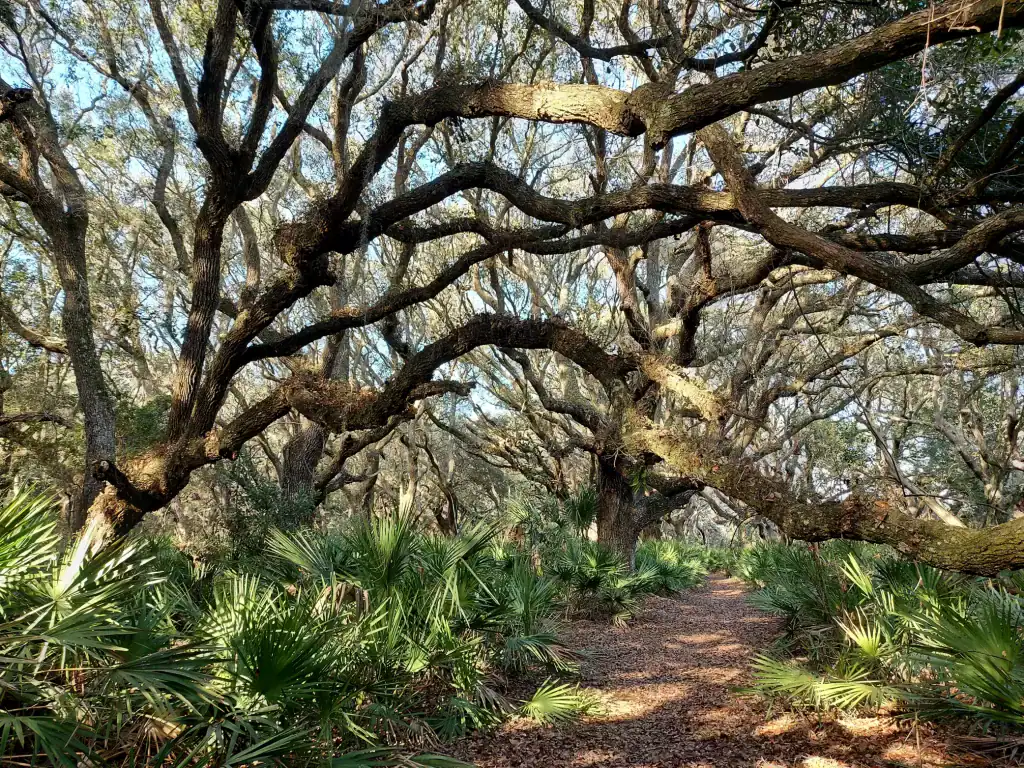The Saw Palmetto: Nature’s Healer

Beneath canopies of pine and oak across the Southeastern United States, the rugged, fan-leaved saw palmetto thrives. For centuries, this palm has played a central role in the region’s ecology, traditional medicine, and cultural lore. Below, we explore the saw palmetto’s story of resilience and healing.
A Southern Native
The saw palmetto (Serenoa repens) is native to the Southeastern United States, with dense populations throughout Florida, South Georgia, and parts of South Carolina, Alabama, and Mississippi. With a low-growing, shrubby form and sharply serrated leaf stems—hence the name “saw” palmetto—this plant is perfectly adapted to survive fire, drought, and nutrient-poor soils. Some colonies of saw palmetto are believed to be thousands of years old, making them among the oldest living plant organisms in the world.

Saw palmetto fronds were useful to Native Americans and early American colonists for weaving baskets and making ropes and brooms. Populations on nearby Cumberland Island used them over the centuries, too; the local Timucua tribe, early British settlers, and newly-freed enslaved people all employed them to roof their shelters.
This palm’s fruit – which ripen from green to a dark purplish-black in late summer and early fall – are an important food source for black bears, wild turkeys, pollinators, and other mammals and birds. On Cumberland Island, it is vital in the diets of deer and raccoons.
Indigenous Knowledge and Medicinal Uses
However, saw palmettos are probably best known for their medicinal properties. Long before European settlers arrived, Native American tribes in the Southeast, including the Seminole, Creek, and Timucua used the berries to treat a variety of ailments.
Their most well-documented use was as a tonic for male reproductive and urinary issues. Healers administered dried or fresh berries to treat urinary tract inflammation, impotence, and conditions likely related to benign prostatic hyperplasia (BPH)—a use that would later catch the attention of modern pharmacologists.
In addition, Native Americans employed saw palmetto as a general tonic to boost strength and vitality and in poultices to reduce inflammation and swelling. Its nutritional content made it a survival food, as well, despite its strong flavor, often described as bitter, acrid, or even soapy.
As European settlers observed the plant’s resilience and usefulness among native populations, it made its way into early American folk medicine. By the late 1800s, physicians prescribed saw palmetto tinctures for a wide range of conditions, including prostate enlargement, testicular atrophy, chronic bronchitis, digestive complaints, and even wasting diseases such as tuberculosis.
A Star in Early Pharmaceuticals
By the early twentieth century, saw palmetto was a sought-after ingredient in over-the-counter medications. Drug companies in the United States and Europe incorporated it into syrups, capsules, and extracts marketed for men’s health even into the 1930s and 1940s. However, after World War II, modern pharmaceuticals largely eclipsed traditional herbal remedies in the United States.
Meanwhile in Europe, particularly in Germany and France, saw palmetto continued to be studied and prescribed into the late twentieth century. Clinical trials confirmed that saw palmetto extracts could reduce symptoms of prostate enlargement with fewer side effects than conventional drugs.
A Resurgence in the Natural Health Movement
With the natural health revival of the 1990s and early 2000s, saw palmetto reemerged in the United States as a top-selling herbal supplement. It remains one of the most commonly-used botanicals for supporting male urological health, particularly for managing BPH symptoms.
Beyond its medicinal value, the saw palmetto holds cultural significance in the South. It is a symbol of resilience and endurance due to its ability to withstand harsh conditions – including drought and fire – and its resistance to most insects. Its image adorns state parks, nature preserves, and even the Florida state seal.

The renewed demand for saw palmetto has brought attention to the need for sustainable harvesting. Because it grows slowly and is an important food for wildlife, berry collection can disrupt local ecosystems. In Florida, where the vast majority of saw palmetto berry harvesting occurs, the state has implemented regulations requiring a permit for berry collection.
Throughout its history, the saw palmetto has proven it is both a healer and a survivor. Whether you pass it on a trail or find it bottled in the supplement aisle, this hardy palm is a reminder of how traditional knowledge and modern science can meet.
Learn more about the saw palmetto and even see them for yourself on our Cumberland Island Walking Tour: Haunting Ruins and Wild Horses!


